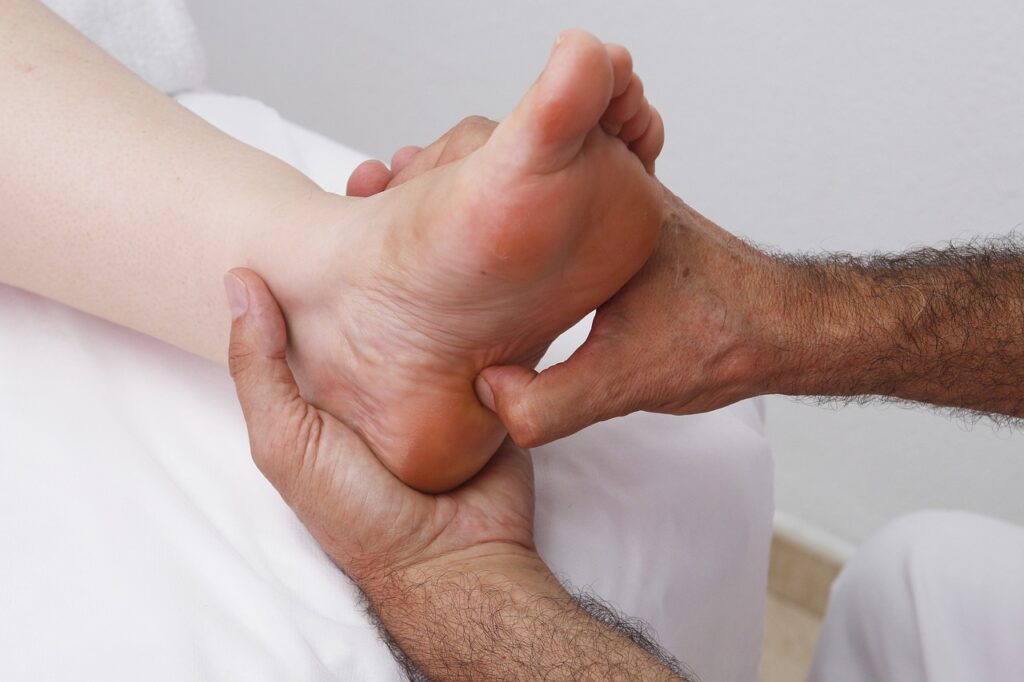Introduction to Lymphedema
Defining Lymphedema
Lymphedema is a chronic condition characterized by the buildup of lymphatic fluid, leading to swelling in various parts of the body, most commonly the limbs. This condition can significantly impact a patient’s quality of life, making daily activities challenging and uncomfortable.
Statistics of Lymphedema in the United States
According to the Lymphatic Education & Research Network (LE&RN), approximately 10 million Americans suffer from lymphedema, making it more common than multiple sclerosis, muscular dystrophy, ALS, Parkinson’s disease, and AIDS combined. These staggering statistics highlight the importance of effective management and treatment options.
Causes and Symptoms
Lymphedema can be primary (congenital) or secondary (acquired). Common causes include:
- Surgery
- Radiation therapy
- Cancer
- Infection
- Trauma
- Congestive Heart Failure
Symptoms of lymphedema include swelling, heaviness, restricted range of motion, recurrent infections, and hardening or thickening of the skin.
The Role of Occupational Therapy

Early Intervention and Prevention
Occupational Therapy in lymphedema care plays a crucial role in early intervention and prevention. By identifying patients at risk and implementing preventive measures, occupational therapists can help reduce the incidence and severity of lymphedema.
Evaluation and Treatment Planning
Occupational therapists conduct comprehensive evaluations to develop personalized treatment plans. These plans address the specific needs of each patient, focusing on improving function, reducing swelling, and enhancing overall quality of life.
Techniques and Tools
Manual Lymphatic Drainage
Manual Lymphatic Drainage (MLD) is a gentle, hands-on technique used by occupational therapists to stimulate the flow of lymphatic fluid. This technique can help reduce swelling and improve the overall function of the lymphatic system, making it a vital component of lymphedema treatment in occupational therapy.
Compression Therapy
Compression therapy involves the use of specially designed garments or bandages to apply pressure to the affected areas. This helps to prevent fluid buildup and supports the movement of lymphatic fluid. Occupational therapists play a key role in educating patients on the proper use and maintenance of compression garments.
Exercise and Movement
Exercise is essential in managing lymphedema. Occupational therapists design tailored exercise programs that promote lymphatic drainage, improve mobility, and enhance muscle strength. These programs focus on gentle, controlled movements that support the overall treatment plan.
Working with a Lymphedema Specialist
Importance of Specialized Care
Working with a lymphedema specialist ensures that patients receive the most effective and up-to-date treatments. These specialists have advanced training in lymphedema management and can provide comprehensive care to address the unique needs of each patient.
Collaborative Approach for Patient Care
A collaborative approach involving occupational therapists, lymphedema specialists, and other healthcare professionals leads to better patient outcomes. This team-based approach ensures that all aspects of the patient’s condition are addressed, promoting holistic healing and management.
How to Become a Lymphedema Specialist in Occupational Therapy

- Obtain a degree in occupational therapy.
- Gain clinical experience in lymphedema management.
- Complete specialized training programs and certifications in lymphedema therapy.
- Stay updated with the latest research and advancements in lymphedema treatment.
Conclusion and Resources
Support Groups and Additional Information
Support groups and online resources provide valuable information and emotional support for patients with lymphedema. Organizations like the National Lymphedema Network (NLN) and LE&RN offer educational materials, support groups, and advocacy efforts.
The information provided on this website is for general informational purposes only. It is not intended as, nor should it be considered, professional medical advice.
FAQs on the Importance of Lymphedema in Occupational Therapy
What is the primary goal of lymphedema treatment in occupational therapy?
The primary goal is to reduce swelling, improve function, and enhance the patient’s overall quality of life.
How often should I see an occupational therapist for lymphedema management?
The frequency of visits depends on the severity of your condition and your treatment plan. Your occupational therapist will provide a personalized schedule.
Can lymphedema be cured?
Lymphedema is a chronic condition, but with proper management and treatment, symptoms can be effectively controlled.
Is lymphedema treatment in occupational therapy covered by insurance?
Coverage varies by insurance provider. It’s important to check with your insurance company to understand your benefits.
Citations
- Lymphatic Education & Research Network (LE&RN). “Lymphedema Overview.” [LE&RN Lymphedema Overview](https://lymphaticnetwork.org/news-events/lymphatic-disease-lymphedema-overview).
- National Lymphedema Network (NLN). “Understanding Lymphedema.” [NLN Understanding Lymphedema](https://lymphnet.org/understanding-lymphedema).
- Rockson, Stanley G. “Advances in the Treatment of Lymphedema.” The New England Journal of Medicine, vol. 377, no. 10, 2017, pp. 926-935. NEJM Advances in Lymphedema.
- International Society of Lymphology. “The Diagnosis and Treatment of Peripheral Lymphedema: 2020 Consensus Document of the International Society of Lymphology.” Lymphology, vol. 53, no. 1, 2020, pp. 3-19. ISL Consensus Document.
Recently Featured OT Insider Articles
Unlocking Hope: Dementia and Occupational Therapy
Empower Your Journey: Occupational Therapy Meets Yoga
Why Did I Choose OT? A Profession with a Purpose
Empowering Recovery: The Significance of Occupational Therapy in ICU Settings
Enhancing OT Practices: The Power of Kinesiology Tape in OT
Top 10 Things to Consider for Choosing the Right Occupational Therapy School
Exploring the World of Travel Occupational Therapy: Opportunities and Impact
